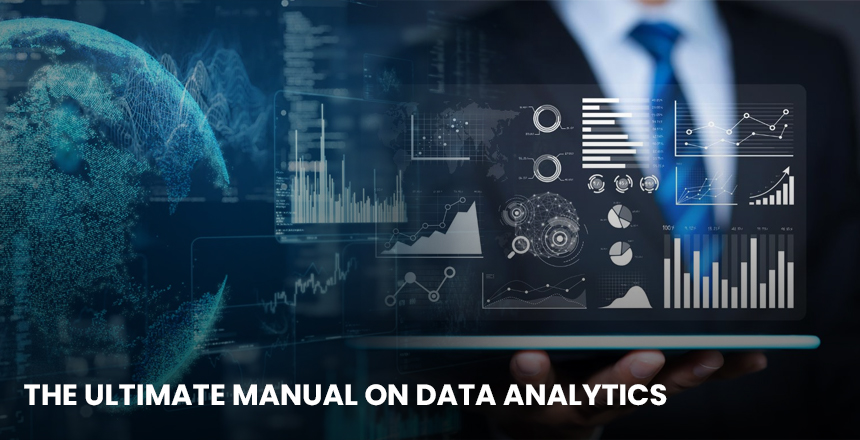]In the current digital world, information is a precious asset, and organizations all over the globe
use information management to gain insights. This is because today there is a heightened call
for data analysts and professionals with a sound general knowledge of data analysis tools. This
blog will present a list of the tools relevant to data analysis in 2024 and give a detailed guide on
data analytics. Furthermore,
Top Data Analysis Software in 2024
- Python: Python is a unique language of the third generation, which finds an application in
data analysis and machine learning. This is a user-friendly tool; they are readable and have rich
and powerful libraries. Numpy, Pandas, and Matplotlib are beneficial for data analysts. - R: R is the other programming language widely adopted for statistical analysis and graphing.
Statistical analysts worldwide use it for its libraries and packages, which simplify most complex
operational activities. - SQL (Structured Query Language): Structured Query Language, better known as SQL, is a
standard language used for manipulating and querying relational databases. It enables data
analysts to perform queries and operations on large datasets, and as such, anyone in data
analysis should learn it. - Tableau: Tableau is a state-of-the-art data analysis tool that allows users to develop brilliant
data visualizations and reports. It makes complex data messages easier and makes it easier for
the data analyst to convey the intended message. - Power BI: Power BI is an online business intelligence service by Microsoft. This system
provides live, customized visualizations and consolidates business intelligence with simple
usability for newcomers and experts. - SAS: SAS is a complex modern software tool designed for data management, analysis, and
modeling. It is one of the most favorite tools for large businesses because it provides solidity
and has powerful analytical characteristics. - Qlik: Qlik is business discovery software that provides means to analyze and better
understand patterns by visually exploring large datasets. Of course it is popular for its data
visualization tools and associative analysis. - Knime Analytics Platform: Knime is an open-source data analytics tool that lets users create
data processing lines and a series of actions. It has good capabilities of data integration, data
preprocessing, as well as general machine learning. - Google Analytics: For companies that are interested in statistics and metrics related to their presence on the web and usage of applications, Google Analytics is indispensable. Not only does it allow businesses to study user behavior and engage with analytical data about traffic and many other things, but it also makes the process more effective when it comes to decision-making.
- TensorFlow: TensorFlow is an open-source software designed for machine learning and deep learning by the Google company. The function is used in the development of the neuralnetworks, image recognition, and natural language processing models.
DATA ANALYTICS TUTORIAL
Understanding Data Analytics: Data analytics means processing raw data or information to find
out useful information and draw conclusions about particular trends and patterns. This process
assists organizations to make better decisions out of the given statistics with an aim of
enhancing performance.
Key Steps in Data Analytics:
- Data Collection: This involves collecting data from our existing clients database or social
media applications, websites, and many other sources. - Data Processing: The second data processing step from data collection is data cleaning and
transformation to increase data quality. - Data Analysis: The data is now ready and can be used to analyze statistical as well as
quantitative methods to search for patterns, relationships, and correlations. - Data Visualization: This involves putting the data in a form that ends up being easily
understood by the various stakeholders in order that they can make the appropriate decisions
based on the data. - Decision Making: Finally, data analytics enables firms to arrive at intelligent decisions
depending on the findings obtained from data analysis.
DATA ANALYTICS COURSES ONLINE
This makes it possible for those would-be students interested in pursuing data analytics study to
take up any of the available online courses. These courses include basics as well as advanced
levels for data analytics. There are a number of platforms out there to get a data analytics
course, such as Coursera, edX, Udacity, DataCamp, and many more.
DATA ANALYTICS COURSE WITH PLACEMENT
Some of the online courses also provide placement facilities, and students can get internships
or jobs after the completion of the online course. To ensure that students have practical work
experience and employment, organizations and institutes affiliate these courses.
DATA ANALYST COURSE FEES
Tuition fees in data analytics courses differ depending on the institution, level of the course, and
the length of the offered course. First-level courses often cover between $100 and $500, while
the advanced courses can range from $300 to $3000 or more. Other institutions also allow
students receiving scholarships or different options of payment for their studies.
DATA ANALYST FRESHER
Data analyst fresher can also mean a person who has done a data analytics course or has
completed a data analytics degree and is entering the field for the first time. Such individuals are
normally having a fundamental understanding of the mapping software and analysis tools and
techniques and possess a desire to learn and progress further in the field.
WHAT DOES AN ANALYST DO?
A data analyst is an organizational professional who is charged with the responsibility of
capturing, sorting, and interpreting data. Their day-to-day tasks include:
- Data collection and cleaning: Collection of information is done by analysts and involves
acquisition of data and verification of the same. - Exploratory Data Analysis: This involves reviewing data to find out patterns, trends, and
relationships that aid business questions and problem-solving. - Data visualization: To make their findings easily understandable, analysts produce charts,
graphs, and dashboards. - Reporting and communicating insights: The authors use analysis to present their
recommendations and conclusions to the stakeholders.
Conclusion
Businesses in the modern world require data analysis as a vital skill in today’s world. In this blog
post, we have reviewed the leading data analysis tools in 2024 and also given tips on data
analytics and a detailed tutorial. We also touched on online classes, placements, fees, and what
a data analyst does. Data analysts who are newly entering the workforce should acquire the
proper skills and equipment to develop in their field and enrich the organizations of which they
are a part.








